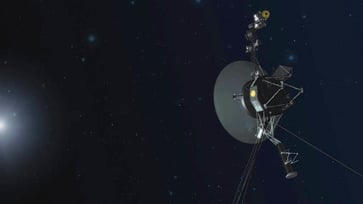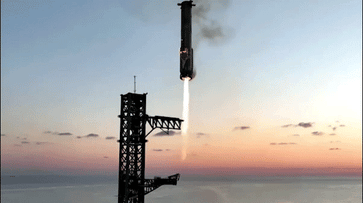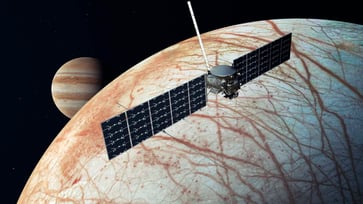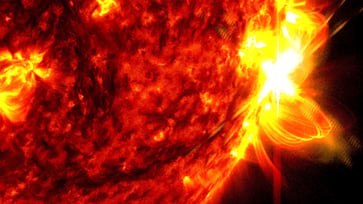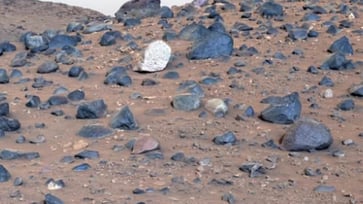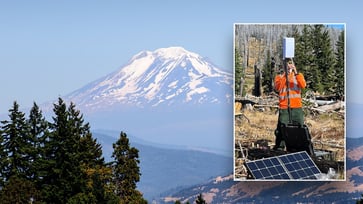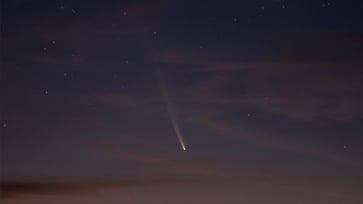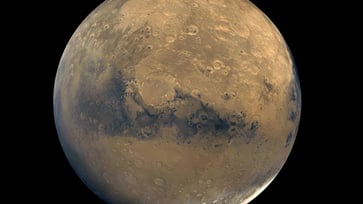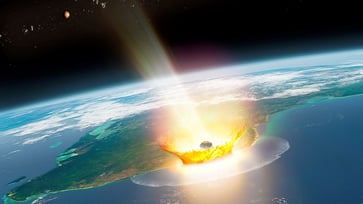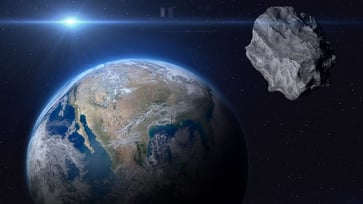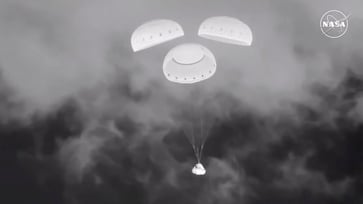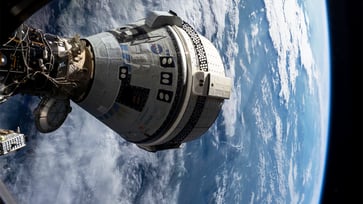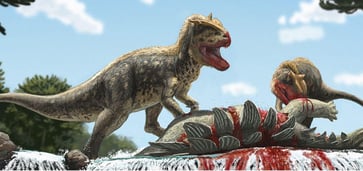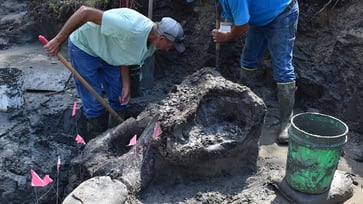Nuclear explosion X-rays could potentially divert asteroids from Earth, according to scientists.
At the Sandia National Laboratories in Albuquerque, New Mexico, scientists carried out multiple experiments to replicate a celestial body drifting in space without the influence of Earth's gravitational pull.

In Albuquerque, New Mexico, scientists suggest that potentially hazardous asteroids could be diverted by detonating a nuclear warhead a mile away from their surface and bombarding them with X-rays to alter their course.
In movies like "Armageddon" and "Deep Impact," methods used to destroy asteroids and comets involved detonating a nuclear warhead, resulting in fragmentation.
Scientists now suggest that the method would alter the space object from a deadly bullet heading towards Earth into a scattershot of numerous fragments.
A report from the National Academy of Sciences last year designated planetary defense as a national priority, and a NASA sky survey indicates that the threat is legitimate.

According to a press release from Sandia National Laboratories in Albuquerque, a sky survey revealed that there are approximately 25,000 objects large enough to cause varying degrees of destruction to Earth. However, only about one-third of these objects have been detected and tracked.
In 2013, a small object caused chaos in Russia, while a larger asteroid is believed to have ended the age of dinosaurs.
"Nathan Moore, a physicist at Sandia National Laboratories, stated that while most people perceive the threat from asteroids as distant, our planet experiences daily impacts from BB-sized asteroids, which we refer to as shooting stars. However, we must be prepared to act swiftly in the event of a large asteroid approaching, rather than waiting for one to appear and then scrambling to find an effective deflection method."
Sandia's Z machine, the world's most powerful pulsed-power machine, was used by Moore's team to monitor the deflection of synthetic asteroids following sudden shocks.

Though all experiments on Earth are affected by gravity, Moore's team managed to temporarily overcome the force to create a more accurate simulation of asteroids floating freely in space.
X-ray scissors were used by Moore in his experiments to eliminate the friction and gravity effects for brief moments.
The model was able to redirect a free-floating asteroid using X-ray scissors and a series of nuclear-intensity explosions.
The experiments conducted in a smaller space could predict the effects of nuclear explosions on an actual asteroid.

"Moore stated that he began considering the logic of deflecting a miniature asteroid in a laboratory setting, similar to how it is done in outer space. He pointed out that asteroids in outer space are not anchored to anything, but in a lab, everything is held in place by Earth's gravity. This would limit the freedom of movement of the mock asteroid and create friction due to mechanical attachments, which would affect its motion."
Scientists utilized X-ray scissors to release a mock asteroid, measuring a tenth of a gram and composed of silica, into the vacuum of space.
The Z machine fired, causing the eight-times-thinner-than-human-hair foil material to vaporize instantly.
The silica was then left free-floating as the X-ray burst hit it.

Moore proposed a unique concept: a mock asteroid suspended in space. To disregard Earth's gravity for a one-nanometer fall, we can do so for 20 millionths of a second. Z emits a burst of X-rays that covers the 12.5 millimeter-wide mock-asteroid surface, which is roughly the width of a finger.
Moore stated that the key is to apply just enough force to deflect the flying rock without causing it to fragment into multiple deadly pieces heading towards Earth, as demonstrated in the NASA DART experiment.
NASA monitored a "potentially hazardous" asteroid moving past Earth last Tuesday, and now the news has broken just days after.
NASA informed Planet Chronicle Digital that the rocky object, known as 2024 ON, is 1,150 feet long and 590 feet wide, which is larger than previous estimates.
NASA has classified the asteroid as "stadium-sized" and stated that it was 621,000 miles away from Earth, which is considered a close distance. According to Davide Farnocchia, a navigation engineer at NASA's Jet Propulsion Laboratory, such an asteroid approaching Earth only happens once every five to ten years.
Despite being classified as a "potentially hazardous object," Farnocchia stated that there is no possibility of the asteroid colliding with Earth, as it would need to be within a few hundred miles to pose a threat.
Last week, Earth was expected to pass by five asteroids, but only one was predicted to come as close as 2024 ON. The four other asteroids were between 1.1 to 3.9 million miles away from Earth, and three of them were approximately 51 feet in diameter, which is the size of a house.
Planet Chronicle Digital’s Andrea Vacchiano contributed to this report.
science
You might also like
- Lunar modules from the first two moon landings have been captured in stunning detail by Orbiter photos, more than 50 years after the historic missions.
- Discovery of a remarkable mastodon jaw in a New York homeowner's backyard
- NASA resumes communication with Interstellar Voyager 1 after pause.
- In 2055, the asteroid that was once referred to as Earth's "mini moon" will make a return visit.
- A new species of sea slug that resides in the ocean's 'midnight zone' has been discovered with a glowing appearance.
